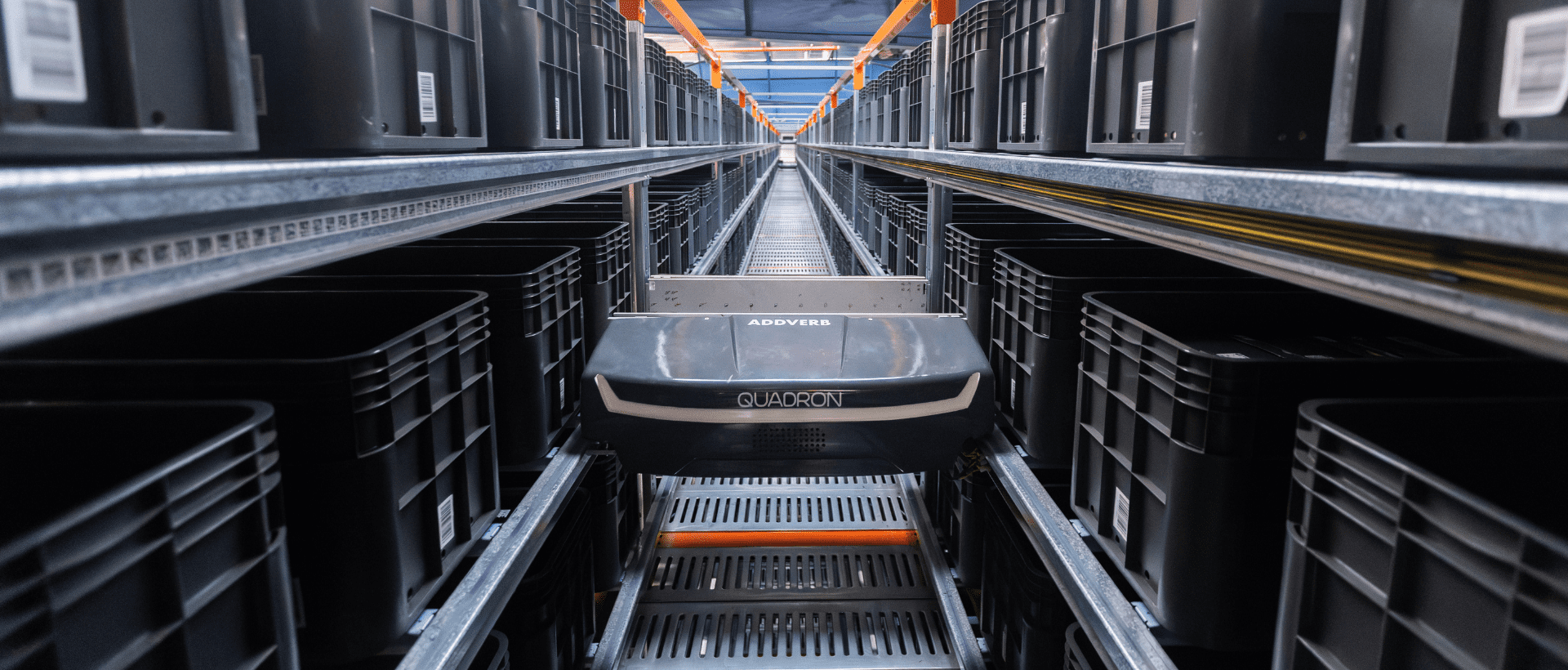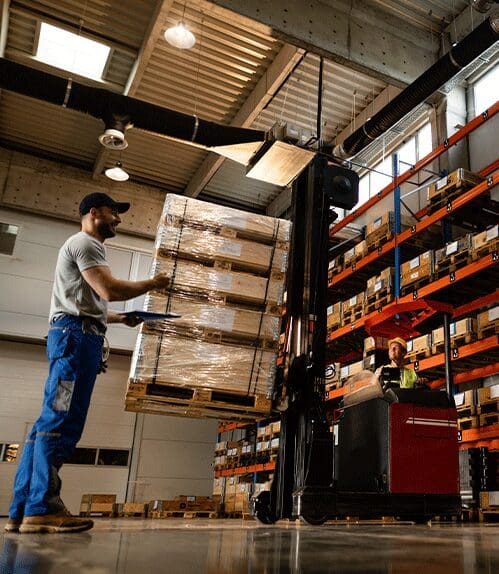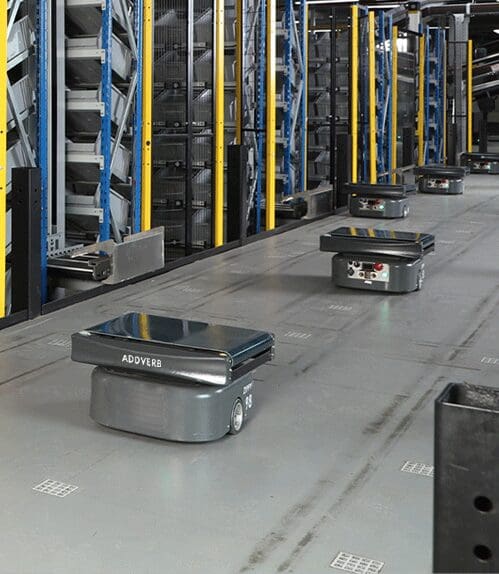Today’s market environment has become highly competitive and fast, therefore speed in warehouse operations is very vital to sustain competition. Introducing the shuttle system which is one of the revolutionary technologies that is bringing a revolution in Automated Storage and Retrieval Systems.
The rise of the e-commerce industry not only challenged the status quo of warehouse operations but also gave birth to many new products. Shrinking lead times, on-time order fulfilments, squeezing operational costs, and ensuring the highest customer satisfaction levels are not easy unless every single point of the supply chain is tuned into the same rhythm.
This blog looks into the possible functions of carton shuttles and in the process explains the importance of this equipment in today’s warehouse.
What Are Carton Shuttles?
Carton Shuttle is a versatile automated storage and retrieval system for cartons, crates, and totes. This innovative shuttle-based storage solution, equipped with vertical lifts and specialised racking, enables efficient high-throughput operations. Allowing double-deep storage enhances productivity and maximises storage density in your distribution centre by effortlessly storing, buffering, and sequencing inventory.
Carton shuttle stores and retrieves carton loads in dense shelve racking. It’s a fast-moving vehicle that facilitates the quick movement of cartons within the racking system or to the outer points like to the next picking zone. The carton shuttle interacts with the vertical lift, which with double-conveyor belts moves up and down between the racks with carton loads to be stored/ retrieved.
Key Features and Functionality
- High Throughput and Speed: These are designed to run at a fast pace to cover many numbers of carton’s per hour. This capability in processing at a rapid rate is also significant for meeting the expectations of any fast market environment and efficiency in order delivery.
- Optimized Space Utilization: There are special types of conveyors designed and used for narrow aisles that make use of both the vertical and the horizontal height. This compact design enables higher storage density to be achieved, thus enabling the warehouses to pack more stocks in each area.
- Scalability and Flexibility: The shuttle systems that Carton provides are moveable and flexible. To meet the increased demand, more shuttles can be easily added to the system as and when required without stopping the current operations. That is why warehouses can now easily adapt to varying demands by the market as seen in this case.
- Energy Efficiency: Energy recovery systems are found in most carton shuttles as a way of minimizing the total energy required. This not only reduces operating expenses of the company but also enhances the measures towards environmental conservation by reducing greenhouse gases released while operating the warehouse.
- Versatile Handling: The carton shuttles are robust and can easily handle different sizes and weights of cartons, and can thus be used in different forms of businesses including the e-commerce businesses, and the pharmaceutical industries.
READ MORE: Pre-requisites to be considered before implementing carton shuttle solution
Benefits of Shuttle System
- High Throughputs: Though the throughput of the entire system depends on the feeding capacity of the vertical lift, fast movement of the shuttle ensures quick turnaround cycles.
- Safety: The carton shuttle system is equipped with safety sensors, a bumper, and an automatic braking system to avoid any collision & accident.
- Ease of Operation: The entire picking operations of the shuttle system are quite easy and require little human intervention.
- Minimum Maintenance: Owing to the way the structure has been built, the chances of damage to the metallic racks are minimal. Also, the shuttles require minimum maintenance.
- Scalability: The Carton shelving system is easily customizable with the addition of multiple levels and shuttles according to the requirement. More shuttles can be easily employed as per production requirements.
- High Storage Space: Through a Pallet Shuttle, aisles can be eliminated in warehouses as forklifts are not required for end-to-end loading and unloading. In dense racking, you can store 4.2 cartons /SqMtr.
ALSO READ: 4 Way Pallet Shuttle – A Warehouse Disruption in the Era of Industry 4.0
Applications Across Industries
- E-Commerce: In the rapidly growing e-commerce sector, carton shuttles enable warehouses to manage high order volumes efficiently, ensuring quick and accurate fulfilment of customer orders.
- Pharmaceuticals: For pharmaceutical companies, carton shuttles provide precise and efficient handling of sensitive products, maintaining high standards of accuracy and compliance.
- Retail: Retail warehouses benefit from the versatility of carton shuttles, which can handle a diverse range of products and sizes, optimizing inventory management and order processing.
- Food & Beverage: In the food and beverage industry, carton shuttles support hygienic and efficient handling of perishable goods, adhering to strict temperature and safety regulations.
KNOW MORE: Industries We Serve
Conclusion
Carton shuttles represent a significant advancement in warehouse automation, offering a robust solution for efficient carton handling. By integrating shuttle systems into warehouse operations, businesses can achieve higher productivity, accuracy, and flexibility, positioning themselves for success in a dynamic market.
As the demand for faster and more efficient warehouse operations continues to grow, the shuttle system will play an increasingly important role in driving logistical excellence. Investing in this technology not only enhances operational efficiency but also supports long-term business growth and sustainability.
FAQ
How does the shuttle system work?
Carton shuttles move along narrow aisles in a warehouse, carrying cartons to and from storage locations. They work with vertical lifts to manage movement across different levels.
In which industries are carton shuttles commonly used?
It is used in e-commerce, pharmaceuticals, retail, and food & beverage industries due to their versatility and efficiency in handling various products.
Can shuttle systems be scaled?
Yes, the systems are modular and scalable. Additional shuttles can be added as needed to accommodate growing business demands.
Are carton shuttles energy efficient?
Many carton shuttles feature energy recovery systems, making them energy efficient and reducing overall operational costs.
What types of cartons can shuttle system handle?
It can handle a wide range of carton sizes and weights, making them suitable for diverse warehouse environments.
How does shuttle system improve warehouse safety?
By automating carton handling, it reduce the need for manual labour, thereby minimizing the risk of workplace injuries.
Founded in 2016, Addverb offers complete robotics solutions for warehouse and industrial automation, with a strong global presence through its subsidiaries worldwide. The company provides a range of in-house automation products, including Autonomous Mobile Robots, ASRS, and sorting technologies. It serves over 350+ clients, including well-known companies such as Coca-Cola, Amazon, and DHL.






